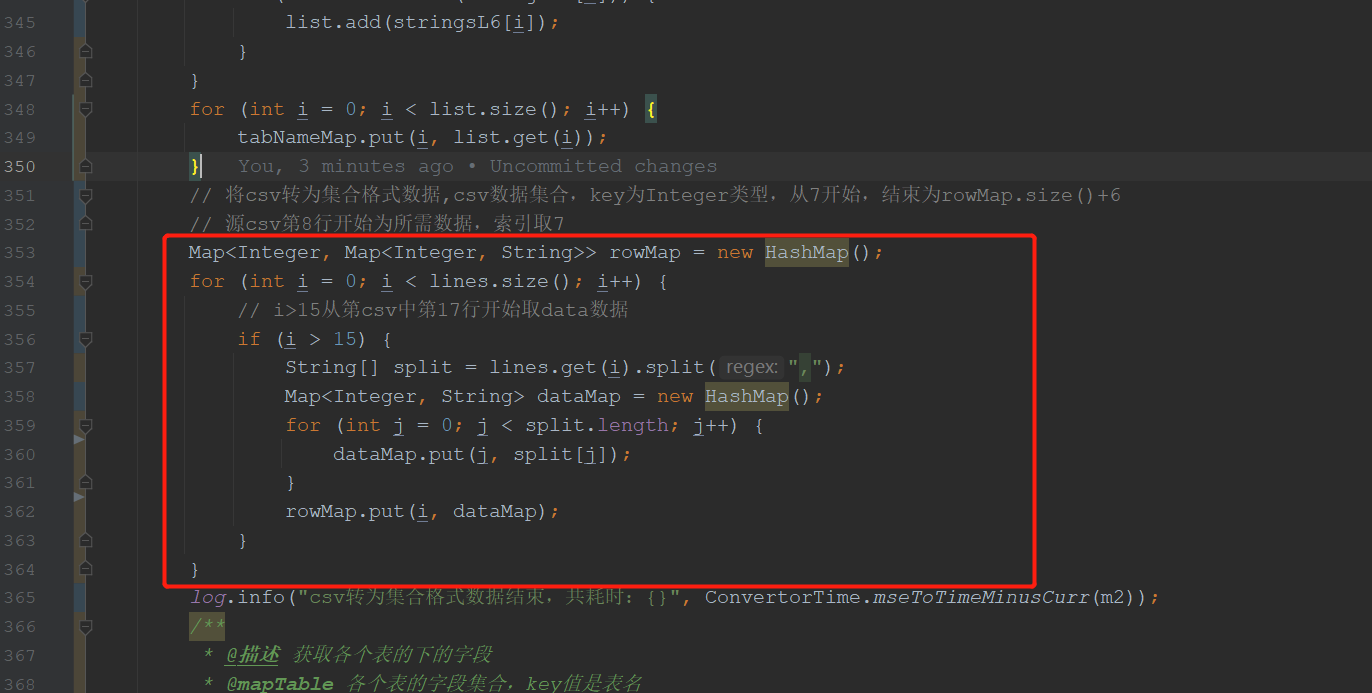项目运行遇到了OutOfMemoryError异常.内存溢出?觉得是不是MaxPermSize设置小了,又给了1个G的大小,试下还是不行,然后使用Java heap分析工具,找出内存占用超出预期的嫌疑对象
dump heap
Heap Dump也叫堆转储文件,是一个Java进程在某个时间点上的内存快照。Heap Dump是有着多种类型的。不过总体上heap dump在触发快照的时候都保存了java对象和类的信息。通常在写heap dump文件前会触发一次FullGC,所以heap dump文件中保存的是FullGC后留下的对象信息。关于Heap Dump
使用jconsole获取dump heap:
建立连接后,选择页签MBean,执行com.sun.management. HotSpotDiagnostic下的操作dumpHeap。第一个参数p0是要获取的dump文件的完整路径名,记得文件要以.hprof作为扩展名(要在Memory AnalysisPerspective下打开扩展名必须是这个)。如果我们只想获取live的对象,第二个参数p1需要保持为true。
JDK自带的jmap工具:
Java代码
jmap -dump:format=b,file=heap.bin <pid> format=b的含义是,dump出来的文件时二进制格式。
file-heap.bin的含义是,dump出来的文件名是heap.bin。
<pid>就是JVM的进程号。
(在linux下)先执行ps aux | grep java,找到JVM的pid;然后再执行jmap -dump:format=b,file=heap.bin <pid>,得到heap dump文件。analyze heap
将二进制的heap dump文件解析成human-readable的信息,自然是需要专业工具的帮助,Memory Analyzer
Memory Analyzer,简称MAT,是Eclipse基金会的开源项目,由SAP和IBM捐助。巨头公司出品的软件还是很中用的,MAT可以分析包含数亿级对 象的heap、快速计算每个对象占用的内存大小、对象之间的引用关系、自动检测内存泄露的嫌疑对象,功能强大,而且界面友好易用。
MAT的界面基于Eclipse开发,以两种形式发布:Eclipse插件和Eclipe RCP。MAT的分析结果以图片和报表的形式提供,一目了然。

{/gird-item}
{gird-item}

{/gird-item}
最后发现到这里内存突然就爆增
看到这里我就觉得是不是split()使用的有什么问题于是就上网查了一下split学习了一下。
原文连接:https://blog.csdn.net/caihaijiang/article/details/7748560
先用一个极端例子说明String的substring方法引起的OutOfMemoryError问题:
public class TestGC {
private String large = new String(new char[100000]);
public String getSubString() {
return this.large.substring(0,2);
}
public static void main(String[] args) {
ArrayList<String> subStrings = new ArrayList<String>();
for (int i = 0; i <1000000; i++) {
TestGC testGC = new TestGC();
subStrings.add(testGC.getSubString());
}
}
}:对一个很长的字符串,使用substring循环保留该字符串里面的一小部分,保存到HashMap中
运行该程序,结果出现:Exception in thread "main" java.lang.OutOfMemoryError: Java heap space
为什么会出现这个情况?查看一下JDK String类substring方法的源码,可以找到原因,源码如下:
public String substring(int beginIndex, int endIndex) {
if (beginIndex < 0) {
throw new StringIndexOutOfBoundsException(beginIndex);
}
if (endIndex > count) {
throw new StringIndexOutOfBoundsException(endIndex);
}
if (beginIndex > endIndex) {
throw new StringIndexOutOfBoundsException(endIndex - beginIndex);
}
return ((beginIndex == 0) && (endIndex == count)) ? this :
new String(offset + beginIndex, endIndex - beginIndex, value);
}该方法最后一行,调用了String的一个私有的构造方法,如下:
// Package private constructor which shares value array for speed.
String(int offset, int count, char value[]) {
this.value = value;
this.offset = offset;
this.count = count;
}该方法为了避免内存拷贝,提高性能,并没有重新创建char数组,而是直接复用了原String对象的char[],通过改变偏移量和长度来标识不同的字符串内容。也就是说,substring出的来String小对象,仍然会指向原String大对象的char[],所以就导致了OutOfMemoryError问题。
找到问题之后,将上面代码中,getSubString的方法修改一下,如下:
public String getSubString() {
return new String(this.large.substring(0,2));
}将substring的结果,重新new一个String出来。再运行该程序,则没有出现OutOfMemoryError的问题。为什么?因为此时调用的是String类的public的构造方法,该方法源码如下:
public String(String original) {
int size = original.count;
char[] originalValue = original.value;
char[] v;
if (originalValue.length > size) {
// The array representing the String is bigger than the new
// String itself. Perhaps this constructor is being called
// in order to trim the baggage, so make a copy of the array.
int off = original.offset;
v = Arrays.copyOfRange(originalValue, off, off+size);
} else {
// The array representing the String is the same
// size as the String, so no point in making a copy.
v = originalValue;
}
this.offset = 0;
this.count = size;
this.value = v;
}从代码可以看出,在String对象中value的length大于count的情况下,会重新创建一个char[],并进行内存拷贝。
除了substring方法之后,String的split方法,也存在同样的问题,split的源码如下:
public String[] split(String regex, int limit) {
return Pattern.compile(regex).split(this, limit);
}可以看出,String的split方法通过Pattern的split方法来实现,Pattern的split方法源码如下:
public String[] split(CharSequence input, int limit) {
int index = 0;
boolean matchLimited = limit > 0;
ArrayList<String> matchList = new ArrayList<String>();
Matcher m = matcher(input);
// Add segments before each match found
while(m.find()) {
if (!matchLimited || matchList.size() < limit - 1) {
String match = input.subSequence(index, m.start()).toString();
matchList.add(match);
index = m.end();
} else if (matchList.size() == limit - 1) { // last one
String match = input.subSequence(index,
input.length()).toString();
matchList.add(match);
index = m.end();
}
}
// If no match was found, return this
if (index == 0)
return new String[] {input.toString()};
// Add remaining segment
if (!matchLimited || matchList.size() < limit)
matchList.add(input.subSequence(index, input.length()).toString());
// Construct result
int resultSize = matchList.size();
if (limit == 0)
while (resultSize > 0 && matchList.get(resultSize-1).equals(""))
resultSize--;
String[] result = new String[resultSize];
return matchList.subList(0, resultSize).toArray(result);
}方法中的第9行: Stirng match = input.subSequence(intdex, m.start()).toString();
调用了String类的subSequence方法,该方法源码如下:
public CharSequence subSequence(int beginIndex, int endIndex) {
return this.substring(beginIndex, endIndex);
}通过代码可以看出,最终调用的是String类的substring方法,因此存在同样的问题。split出来的小对象,直接使用原String对象的char[]。
看了一下StringBuilder和StringBuffer的substring方法,则不存在这样的问题。其源码如下:
public String substring(int start, int end) {
if (start < 0)
throw new StringIndexOutOfBoundsException(start);
if (end > count)
throw new StringIndexOutOfBoundsException(end);
if (start > end)
throw new StringIndexOutOfBoundsException(end - start);
return new String(value, start, end - start);
}最后一行,调用了String类的public构造方法,方法源码如下:
public String(char value[], int offset, int count) {
if (offset < 0) {
throw new StringIndexOutOfBoundsException(offset);
}
if (count < 0) {
throw new StringIndexOutOfBoundsException(count);
}
// Note: offset or count might be near -1>>>1.
if (offset > value.length - count) {
throw new StringIndexOutOfBoundsException(offset + count);
}
this.offset = 0;
this.count = count;
this.value = Arrays.copyOfRange(value, offset, offset+count);
}方法不是直接使用原String对象的char[],而是重新进行了内存拷贝。




评论 (0)